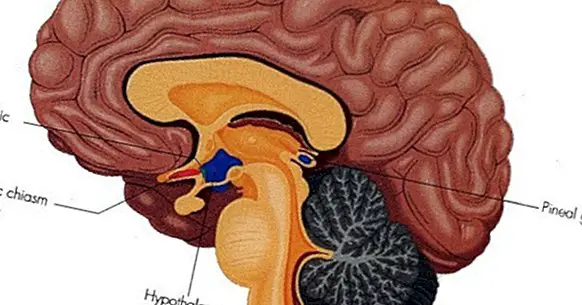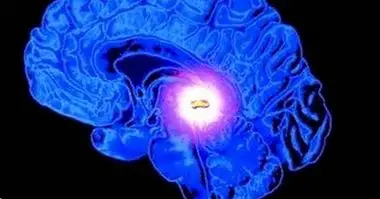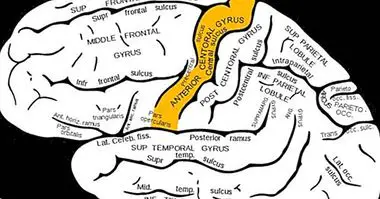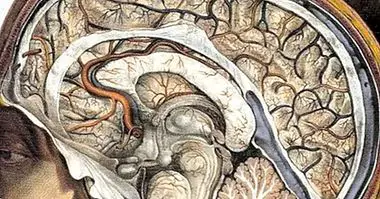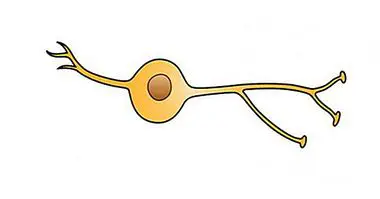Suprachiasmatic nucleus: the internal clock of the brain
Although many times we assume that the human brain is basically the organ that allows us to think and be aware of things, the truth is that it also performs all kinds of automatic and unconscious functions. It is not simply the biological basis of the human intellect; It also takes care of a multitude of essential processes for our survival.
The suprachiasmatic nucleus is an example of this . While certain regions of the brainstem are responsible for enabling the heartbeat or regulating body temperature so that our cells do not die, this brain structure acts as our internal clock. Next we will see what exactly this means and what anatomical characteristics the suprachiasmatic nucleus presents.
- Related article: "Parts of the human brain (and functions)"
What is the suprachiasmatic nucleus?
We understand by suprachiasmatic nucleus a small structure formed by some 20,000 neurons located in the area of the hypothalamus closest to the face, that is, in the lower part of the diencephalon. It is composed of gray matter.
You have to bear in mind that there is a suprachiasmatic nucleus in each cerebral hemisphere , that is, two per individual on each side of the head.
Its location
As its name indicates, the suprachiasmatic nucleus is located above the optic chiasm , which is a zone located at the base of the brain in which the optic nerves intersect, passing to the opposite half-body. It is also possible to locate it taking as a reference the hypothalamus, since it is located in the anterior part of this cerebral structure, limiting both sides of the third cerebral ventricle.
The fact that the optic chiasm is located just above the optic nerves is not accidental; in fact, its operation has to do with the light signals that are captured by the retina, as we will see.
Functions of the suprachiasmatic nucleus
The main task of the suprachiasmatic nucleus is regulate circadian rhythms that govern the levels of activity of the body depending on the moment in which we are. Circadian rhythms are the cycles that determine when there is a greater need to rest and when there is a large amount of energy available and therefore we will move more, think better, etc.
That is, the suprachiasmatic nucleus intervenes in sleep-wake cycles, and makes us more likely to sleep at certain times and wake up in others, for example, and we do not have the same energy at 12 noon that after dinner .
The cycles that regulate the suprachiasmatic nucleus last 24 hours, since evolution has meant that adapt to what a natural day lasts from the luminosity captured through our eyes.
Thus, when we expose ourselves to the light, this is interpreted by this brain structure as evidence that it is time to stay awake for longer, and it is delayed the massive segregation of melatonin , a hormone that is much more numerous just before starting to sleep and while we remain in the sleep phase.
- Related article: "Melatonin: the hormone that controls sleep and seasonal rhythms"
Operating mechanism
When we look somewhere, the light that reflects what we focus our eyes on is projected onto the retina, a layer of cells located inside the eye that some scientists consider part of the diencephalon.
This membrane collects the electrical signals in which the light patterns of what we see are translated , and sends this information to the brain through the optic nerves. The usual route of most of this information goes through the thalamus and the occipital lobe, an area in which visual information begins to be integrated into larger and more complete units.
However, part of this information deviates from this route at the height of the optic chiasm, located at the "entrance" to the brain, to reach the suprachiasmatic nucleus. This structure does not recognize details of light patterns, shapes or movement, but is sensitive to the general amount of light that is being collected by the retinas. This causes orders to be sent to other areas of the body related to circadian rhythms, such as the pituitary gland, located in a nearby place.
In this way, our body adapts to what is interpreted to be environmental demands. At the end of the day, if we are designed in a way that generates more efficiency during daylight hours, it is better to take advantage of those moments and leave the dark hours to rest, according to the logic of natural selection.
But nevertheless, the use of artificial light sources It can make this turn against us and, for example, exposing ourselves to the light of a computer screen shortly before going to sleep will cause us insomnia despite being tired from a long day of work. This makes our body try to respond to a strange situation for which it has not been prepared: days with many more hours of light.

